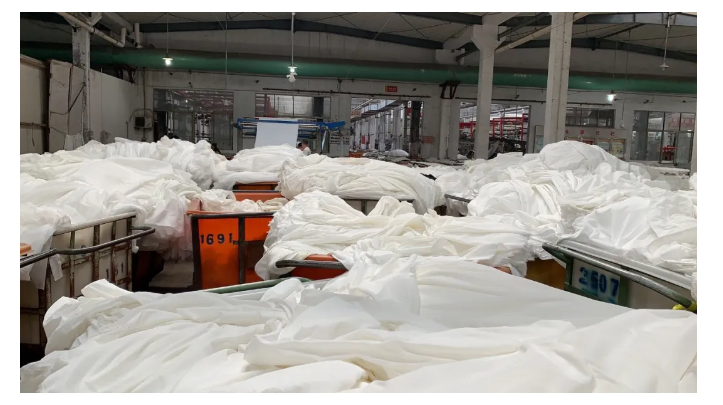Hot events
Recently, Brazil’s authoritative medical research institution has detected 110 mutated new coronavirus strains circulating in Brazil. Experts say that mutated viruses may be more transmissible, and some may even have the ability to escape immunity.
The United Nations health agency stated that the new coronavirus mutant strain “B.1.617” discovered in India has been reported in 44 countries Appeared in six major regions around the world including the Americas, Europe, Southeast Asia, the Eastern Mediterranean, Africa and the Western Pacific. The COVID-19 epidemic is currently raging overseas, affecting the global textile industry supply chain, and also hindering the recovery of my country’s textile economy. Although domestic citizens have been vaccinated on a large scale and the production of textile companies is back on track, sales have not yet returned to pre-epidemic levels. The demand for terminal clothing is still weak, largely due to the impact of overseas epidemics. Therefore, the “gold, three, and silver” peak seasons in the first half of the year were fleeting and lacked heat, so many textile companies did not clearly feel the arrival of the peak season.
01 Small batch orders were placed in multiple batches in April. The overall shipment of goods in the weaving market slowed down, and the products still lacked bright spots. At the same time, the price increase of upstream raw materials has basically ended, and there have been three price reduction promotions, which to a certain extent also led to a fall in fabric prices. The operating rate of weaving has also begun to decline for four consecutive weeks, and inventories have also risen rapidly. Entering May, although the overall market performance is still average and the transaction volume is weak, there is a partial improvement. Since May, some weaving companies and trading companies have reported that orders have improved compared with the previous period, and orders have been placed frequently. Manager Jin of a foreign trade company said: “Orders have improved recently, but they are all in small batches, with an order measuring five to six kilometers, and many colors, two to three hundred meters per color. However, orders are placed very frequently, and basically one order has not yet been completed. Another one has come, and orders are placed in a continuous cycle. The dyeing factory we cooperate with has been very busy recently, and the delivery time is very tight, making it difficult to ship goods, which is a headache.”

02 Some printing and dyeing companies are operating at full capacity. However, small batch orders have not stimulated the entire market atmosphere, and are only reflected in the printing and dyeing industry. According to a salesperson from a local medium- and large-scale dyeing factory: “The recent warehouse entry situation is still good, and the machines are running at full capacity. Even so, the delivery time is about 7-10 days. The varieties produced are relatively complex. Mainly conventional fabrics such as ordinary polyester taffeta, pongee, and taslan, with four-way elastic fabrics being more prominent.” According to research, orders in the printing and dyeing market were still good in May, and the production of many dyeing factories was still very good. Crowding and queuing are common. The recent production congestion in dyeing factories is mainly due to the issuance of “market orders”. At this time of year, market orders are intensively issued. Such orders are often large in quantity and short in production time. In the past, when it came to market orders, people thought they were orders with low quality requirements, but in fact this was a misunderstanding. According to many business and staff in the dyeing factory, the quality requirements of today’s market orders are not lower than the order orders, and some are even higher than the order orders. higher. Therefore, its production is more time-consuming and labor-intensive, and the machine has to be produced at full capacity.
At present, according to the sample data monitoring of Silkdu.com, the operating rate of printing and dyeing enterprises is still maintained at about 80%, which can be said to be a very high level. During the same period in May 2020, the entire textile industry was in a special state of semi-stasis due to the epidemic, so it can be compared with the same period in May 2019. According to the figure below, we can clearly see that the printing and dyeing start-up in May 2021 is slightly higher than that in 2019. To a certain extent, it can be said that today’s textile industry has returned to normal levels after the epidemic. However, overseas epidemics are still inextricably linked to the domestic textile industry, which still suppresses overall demand to a certain extent, so the recent market has been slightly weak.
Postscript
It seems that returning after May Day The market is indeed undergoing subtle changes. Many traders have received relevant orders, but some traders said that no one is interested in their own fabrics. Regarding this situation, the editor can only say that some people eat porridge and some eat meat. . In addition, as the overseas epidemic continues to spread, textile companies need to pay more attention to the placement of foreign trade orders and the delivery of goods in the domestic market to prevent being affected by the epidemic again.
</p







